I counted.
Twenty-eight seconds green
Two seconds yellow
Thirty-seven seconds red
One second yellow
And again
Twenty-eight seconds green
Backlight
The traffic light turned one hundred this summer, on August 5. I learn this from the “Innovation” section of the Siemens website. Apparently, the first electric traffic light was put in operation in Cleveland, Ohio. Its control signals were operated by a police officer who sat in a little shack at the intersection and rang a bell each time the colors changed. The company installed its first traffic light in Berlin ten years later, in 1924, on Potsdamer Platz.
But at this moment I am staring at the traffic light at the intersection of Ohlauer Strasse and Reichenberger Strasse in Kreuzberg. I have been part of a blockade on this section of Ohlauer Strasse for a couple of hours. Now darkness slowly sets in. The blockade started a few days ago, when a former school that had been occupied by 250 refugee activists was evicted—with the help of 1700 armed police officers in riot gear. A group of forty activists refused to leave the building on Ohlauer Strasse and withdrew to the rooftop, threatening to jump if the police attempted to evict them by force.
The refugee strike started in 2012 with a march on Berlin protesting the mandatory residence policy. The noncitizens established a tent city on Oranienplatz and later in the school, demanding abolition of deportation and mandatory residency and the reconstitution of the right to asylum in Germany, which has been effectively annulled since 1993. The strike action was triggered by yet another suicide of a noncitizen in an asylum camp in Bavaria in January 2012; the man hung himself out of fear of deportation and desperation over ill treatment in the camp.1
The refugee strikers’ determined and powerful struggle was met by tremendous support from locals and an intransigent technocratic stance from officials, who tend to tighten asylum laws rather than grant people the formerly constitutional right. The right to asylum had been anchored in the German constitution since 1949 as a direct result of the lived experience of fascism in Germany. Over the course of the war, half a million political refugees had fled German National Socialism and were granted asylum by over eighty countries. Article 16 of the German constitution, the unconditional right to asylum, was an acknowledgement of this experience. Yet in 1993 this right was removed from Article 16 and transferred to a new article, 16a, thereby intricately eliminating the right to asylum in Germany.
This discrepancy in response shows itself very clearly at the siege that evolved when 1700 riot police, some of them carrying live ammunition, surrounded the occupied school to supervise the eviction, while supporters immediately gathered behind the police lines to try to prevent the eviction. There has now been a deadlock for almost a week, growing layers of immobility like an onion, or a stack. The activists are barricaded on the roof and the police have cordoned off the entire block, only granting passage to people with resident permits. In another layer, locals who support the protest have blocked off the police cordon at all intersections around the clock, to hinder their flow of supplies and prevent eviction.
Democratic law has been suspended for five days in this part of Kreuzberg; all sides struggle to define what is inside and what is outside and flip the order of the stack. The police line defends German interests from the demands of the refugees and effectively declares the besieged school as “outside.” The supporters declare the siege illegal and stand in solidarity with the people inside the school, averting the state’s proposed exclusion, instead turning around and redefining the cornered police line as being outside. The people inside the school wait in limbo between deportation and captivity with nothing much too lose and everything to fight for. Nobody can make a move—the government shows no propensity for genuine negotiation that doesn’t involve tricking the activists with empty promises.
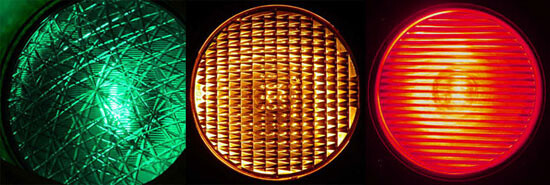

So at this moment nothing budges on the crossing of Ohlauer and Reichenberger Strasse. Supporters sit on the pavement, drinking and chatting. Behind the barrier the men and women in riot gear shift their body weight from left to right while leaning onto their shields. Their backs are turned to the school, hardly visible in the dusk. The only things that move perpetually are the traffic lights, diligently turning from red to yellow to green and back as if they were operating invisible traffic, or just stoically insisting on normality.
But now, as night is falling, the red, yellow, and green lights shine on the scene rather like disco lights, changing the mood every thirty seconds or so by illuminating the faces of police and protesters alike, the cordons, the pavement, and the idle police vans behind the police line, immersing all in a detached glow and rhythm. And like disco lights, the colorful flashes suspend, fictionalize, and breach agendas, dress codes, movement, spatial layout, and power relations. But the vision flickers and other readings recrudesce. The sequential shine appears to signal the algorithmic cluelessness of a system that does not know how to respond to the complexity of a globalized world where the claim over freedom of movement means more than just jaywalking.
The main character in the BBC comedy Little Britain is a receptionist named Carol Beer. When asked a question, Ms. Beer types a random line into her computer, only to reply, “Computer says no,” followed by a strong cough in the customer’s face. Similarly, the flashing signal could be read as the response code of an ignorant state that has decided to be indifferent towards the demands of its citizens and noncitizens. The traffic signal’s working/not-working status could also be seen as the apparent contradiction in the act of a democratic state that tries to defend its interests against the refugees by suspending said democracy. If a democratic order can only be protected through highly militarized police operations that suspend civil rights, then whose interests are actually defended? The traffic lights maintain an order that has actually been canceled because movement has not been flowing according to the convenience of the official sovereign who claims monopoly over who and what moves.
Another piece of information from the Siemen’s website illuminates recent company goals and innovations in this vein:
Since March 2014, traffic lights have gone online. Thanks to a new control device from Siemens, cities can manage their traffic lights from a private “cloud” and correct problems without turning traffic lights off—and this from any location in the world, via smartphone, tablet, or computer. New technology also allows for remote maintenance. The Siemens Support Center in Munich already assists 255 cities worldwide, from Abu Dhabi to Würzburg, in the event of any problems with traffic computers or traffic lights. In the future, experts working in Munich will be able to fully service traffic light systems remotely, guaranteeing safe and trouble-free operation.
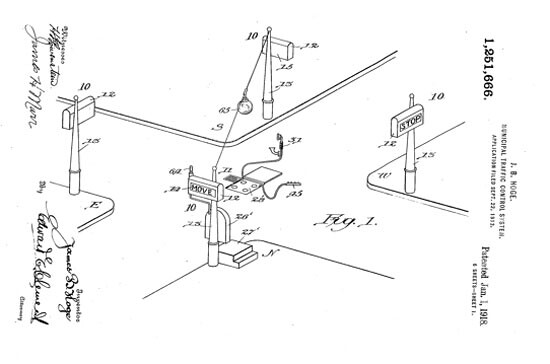

Blue Light
Back home I sift through collections of traffic lights and parts of traffic lights that people have put online. Willis Lamm, who runs a Natural Horsemanship Webring, owns a vast collection of different signal lenses, and he has photographed each one against the light—ribbed, crosshatched, beaded, and marbelite lenses, orange peel, Crouse-Hinds, and spider web.2 The lens patterns are different attempts to meet problems like phantom light, diffusion, and enhancement, and chromatic standards. I remember finding such a lens on the street years ago and I kept it in my bag because I liked looking through it from time to time. This was before the illuminated screens of phone, tablet, and computer inhabited my bag. I remember truly enjoying the sensations I experienced when the refracted light coming through the lens hit my eyes, but I also often just held the lens against any surface to see whether the yellow spiderweb would emit its tinted pattern onto other things, and if so, how that would look. At that time, any refraction caught my attention. It was part of an involuntary study of my own perception. Seeking out refracted and reflected light seemed so much more interesting than looking at pictures.
Most things I look at now are on a screen, including the Twitter feed from the occupied school at Ohlauer Strasse. My backlit devices illuminate my face and my bedroom with a particular cool blue light that shines almost independently of what shows on my screen. The light has a color temperature of 6,500–10,500 Kelvin, which correlates with a partially overcast daylight of about 7,000–12,000 Kelvin.
Unlike the red and green colors of a traffic light that are part of a symbolic order I have learned to internalize, the device-blue light is more visceral and talks directly to my melatonin levels. It says ON! GO! OPEN! ACTIVE! DAY!, announcing a perfect eternal day—not unlike being at Kunsthaus Bregenz, a minimalist architectural structure designed by Peter Zumthor that hosts contemporary art. Its impervious façade consists of light panels that form a free-standing, light-diffusing skin. Its unpainted concrete and polished terrazzo interior is illuminated by changing ratios of artificial and incident light that emit consistently from invisible cavities above the glass ceilings, giving the space a uniform luminosity and color temperature. You can’t possibly tell the time at Kunsthaus Bregenz, and you’re intrinsically not supposed to. The eternal average 8,000 Kelvin of Zumthor’s art space and of my smartphone screen equally eliminate cycles, transiencies, limits, stop signs, night, idleness, fatigue. The light doesn’t care where I go or what I do—whether I’m productive, procrastinating, editing, chatting, walking, or standing—as long as I keep it turned on.
1, 2, 1, 2, keep it on
Listen to the shit because we kick it until dawn
Listen to the abstract got it going on …Gonna get it together, watch it
Gonna get it together Ma BellI’m like Ma Bell, I’ve got the ill communications
Ma Bell, I’ve got the ill communications
Ma Bell, I’ve got the ill communications
Ma Bell, I’ve got the ill communicationsKeep it on and on and on
—Beastie Boys, “Get it Together,” Ill Communication, 1994
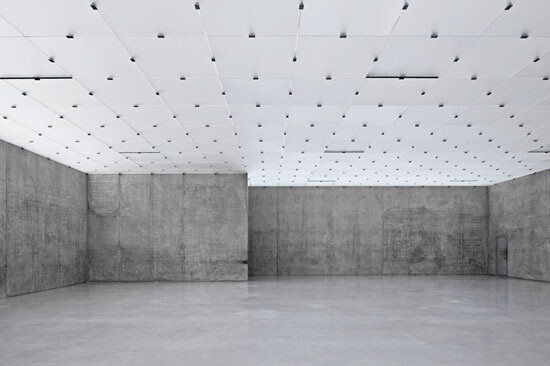

When did this particular blue light start to light up my life? Someone must have switched it on at some point. Or is it truly without beginning or end? If I trace it beyond my phone’s projections, one streak beckons to the blue apparel of Margaret Thatcher. She started her politics of deregulation, privatization, and flexibilization wearing 15,000 Kelvin, the color of a clear blue sky. And as we’ve learned from Adam Curtis, many who had destroyed the policeman inside their heads voted for this new economy of the product-aided, limitless self to explore further what they really, really wanted. Deregulation put the control, the ownership, and even the traffic into private hands. Ronald Reagan, Thatcher’s fellow blue rider, followed the same privatization politics repeatedly announced in his campaign: he vowed to “let the people rule” and to “take government off your backs and turn you loose to do what you can do so well.” In fact, privatization meant shutting down the idea of a common project, of shared responsibilities, and of a system of accountability and welfare. Now everyone was responsible for their own individual happiness-production and management, and had to work 24/7 to express and promote the results. It required special techniques of staying put. A new reversed type of “American night” filter had to be applied to the scene, one that simulated day in the middle of the night and illuminated our faces with the appropriate white balance. Additionally, due to the refresh rate of our displays, this new light came in the form of a stroboscopic flicker that pulsed the artificial day. Anyone who has experienced strobe at a club probably discovered that it changes the perception of motion profoundly. Movement can come to a standstill in this light.
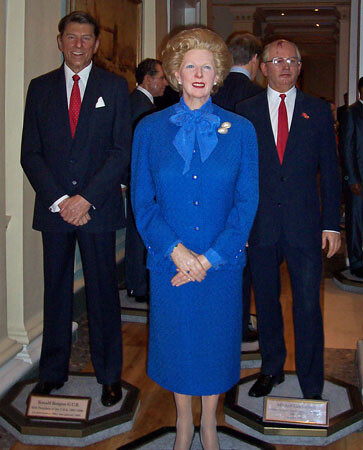

But with the arrival of evermore tailored technologies, devices, and practices, the new freedoms and responsibilities of the self-actualizing individual turned into new social anxieties. To fight symptoms like FOMO and other Pavlovian reflexes that he, like many of us, has developed, a friend asks me how to de-smartphone. He thinks it’s a necessary step in order to withdraw from the never-ending stream and regain some agency over his life, but he wants to do it without being expelled or left out of social interactions and information. He is worried that changing his status from constantly “ON” to “off and on” or to “OFF” altogether—by removing “infinity apps” or simply by throwing his phone in the trash—might turn him into an accursed nocturnal animal. An invisible creature that you’ve heard about but can’t google.
If this particular light has a history, it might as well have a locus.
Scanning through the different registers of the blue light, I detect another substantial source: it is the blue glare of the European Union and its borderless Schengen expanse. A light that shines so bright that its representatives mistake dominance for relevance. The European flag that depicts twelve golden stars upon a uniform azure blue background tones this light. The official commentary by the ministerial committee at the flag’s introduction in 1955 breaks down its symbolism as follows:
Gegen den blauen Himmel der westlichen Welt stellen die Sterne die Völker Europas in einem Kreis, dem Zeichen der Einheit, dar. Die Zahl der Sterne ist unveränderlich auf zwölf festgesetzt, diese Zahl versinnbildlicht die Vollkommenheit und die Vollständigkeit.
Against the blue sky of the Western world the stars depict the peoples of Europe in a circle, the sign of unity. The number of stars is invariably set to twelve, this number epitomizes perfection and completeness.3
Azure as a background color used to be rare in Europe, as the blue pigment “lapis lazuli” was scarce and therefore sublimely expensive. According to my art history teacher, it was Giotto di Bondone who first used the azure color of the sky instead of the traditional gold to paint the background of his frescos. He imported it from Badakhshan Province in today’s northeast Afghanistan. Giotto’s particular blue background and sequential string of rhythmic figures in the foreground marked the beginning of a new time in Europe that would become known as the Renaissance.


So apparently the blue sky of the Western world was imported and depended on mining in remote regions, a fact that does not really match the arbitrary symbolism of completeness that Europe defends so vividly at its outer borders and in our neighborhood in Kreuzberg. The circle of twelve stars does not even count all of Europe’s member states, let alone the faraway regions on which Europe’s shine has been feeding for centuries.
The borderless blue of the Schengen interior is suddenly dimmed at its seemingly insurmountable outside border. In fact, this border is ferociously jammed with several layers of different high-tech fences, enforced by Frontex, the privatized border police that deliberately ignores SOS calls from boats on the Mediterranean in order to lower the risk of illegal migrants entering the zone. This layer is followed by another bureaucratic border stack—the so-called Dublin Regulations. The broad deterrence campaigns of fencing and armed patrols and intervention by sea, land, and air make it almost impossible for asylum seekers to claim protection under the 1951 UN Refugee Convention. But if they manage to reach Europe alive, under the Dublin Regulations they are restricted to the country they first enter. They often end up in detentions centers in Greece or Italy. Together, these measures partition the infinite blue sky into fortified layers that protect Europe’s radiant circle of perfection and completeness.


In yet another layer, Europe’s outer limits voluntarily or involuntarily configure a gigantic mass grave. A democratic order claims the monopoly over who and what is allowed to move legally, thereby quashing its own foundational values and claims in order to protect those very values and claims. The antinomy grows in proportion to the number of deaths, but it is not part of the picture. Frontex released a 135-page “governance” document entitled Program of Work 2014. The text does not mention the word “death” one single time.4
The limitless blue firmament in fact has a unflattering backstage—an unexpected depth that is not eternal, not borderless, but is nonetheless a very, very deep void. But this depth is of another order. One has to enter this order piled in stacks and other, messier conglomerations that loom behind the flatness of the devices and areas that so passionately suggest borderlessness and limitlessness.
But how can I touch or enter these other depths that come with the blue light?
I got the ticket to fulfill your dreams,
Just touch the sky with it, just touch the sky with it
Just touch the sky with it, just touch the sky with it
Just touch the sky with it, just touch the sky with it
Just touch the sky with it, just touch the sky with it—Sean Paul, “Touch the Sky,” 2011
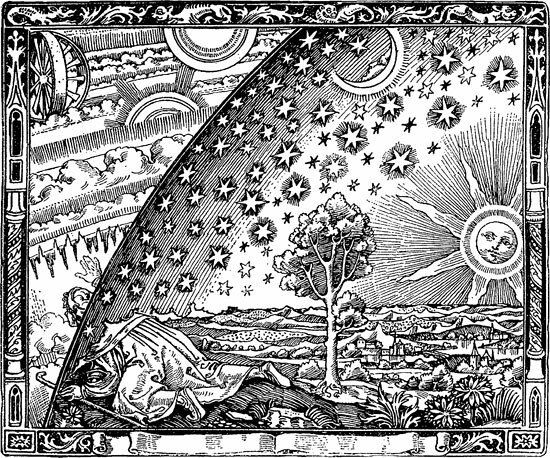

Surface Depth
Donna Haraway received a JPEG file in an email from a friend named Jim. It was a picture that she named “Jim’s Dog.” Jim’s Dog depicted a burned-out redwood stump overgrown with mosses, ferns, and lichens that resembled an unhurried sitting dog. Jim took a photo of this particular resemblance that lasted for one season only. But not only because of its temporality: Jim’s Dog melts into a conglomerate of forces. According to Haraway, we touch Jim’s Dog with a visual system inherited from our primate kin and now folded into the metal, plastic, and electronic flesh of the high-resolution digital camera, but also the e-mail program and the computers and servers that brought the compressed JPEG onto our screen. In this touch we are inside the histories of IT engineering and assembly-line labor, but also those of nineteenth-century loggers whose labor practices involved leaving the burned stumps of the trees they cut to then be taken over by myriads bacteria and fungi. The whole layered picture is also indebted to the California policy of the “green belt,” an environmental measure wherein California cities resist the fate of ever-growing Silicon Valley. This measure prevented Jim’s Dog from being bulldozed for Santa Cruz real estate expansion. Haraway decided to use Jim’s Dog as the screen saver on her computer, as it helped her to think about the necessary responses to such a complex visual phenomenon, or about what she calls “becoming worldly.”


We receive our daily data of images, texts, audio, and video on increasingly flat devices, and interestingly, they are increasingly difficult to disassemble. I recall a time when I was able to open my laptop or phone or even the screen and replace parts. Now their slimness connotes an impervious object that is just surface, and effectively, its parts are also mostly glued together. The device seemingly has no material depth; it is a mere surface, a screen held by your hand or another base. When you look at it from the side, it looks like one thin consolidated entity. But although a liquid crystal display is astonishingly flat, it consists of several layers assembled in a glass stack that help to make things visible on the screen and also to deal with similar problems like the ones traffic lights have to confront: diffusion, directionality, and conflicting light sources like the sun.
Despite its physical flatness, the display is eternally deep if you install the required software and apps that connect you to the stream of data provided in never-ending sequences by tireless algorithms. Exposing one’s gaze solely to the frontal view of the device and to the hypnotizingly infinite stream of images, text messages, and other content on the screen, the experience of depth is magnificent. But any other experience, or, as Haraway would say, “touching,” of depth is fairly intricate. Looking at my tablet from all sides, I suspect that this is intentional. I am supposed to remain in the belief that my device is flat and that the potentials it facilitates are infinitely deep.
Already our motionless posture in front of a screen suggests that we’re experiencing a resurgent version of a flat-earth belief system—one that makes it hard, painful, and even dangerous to look beyond the firmament. You might fall over the edge or be expelled. However, looking straightforwardly at the device will let you forget about this abyss, as you’re always busy with a new feed. But the abyss of other depths—like the one found in Jim’s Dog—will not just go away if we simply ignore it. As Paul Virilio points out, the invention of new technologies is also the invention of new accidents. By inventing the plane, you also invent the plane crash.5 Whether or not I want it to, the light on my LCD extends beyond the content on my screen and beyond the display’s glass stack in both directions, towards me but also towards sources I can’t trace with my eyes—the inventor or owner of the file format, the assembly line of the camera manufacturer, the room that hosts the server, the water that cools the data center, the nuclear accident that happened in the power plant, and so forth. A junkyard full of world-making stuff blows in my face when the light hits it, regardless of the image that shows on my feed.
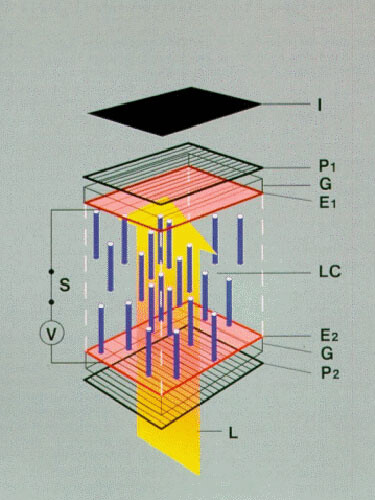

In order to experience and grapple with the other depths beyond the flat device, I started to look for techniques—techniques of looking, and as Donna Haraway suggests, techniques of becoming worldly. Just like when I studied the refracting and reflecting properties of a signal lens, I quarry for the contact zones between my figure and other figures, between my body and other bodies, my eyes and visual events to seize the world-making entanglements that might constitute this other depth. Becoming worldly is a form of striving, an acknowledgement that looking is participating, touching is in fact an entanglement.
If I can’t disassemble the device, I can start by taking apart my visual system. The necessary dispersion of my gaze starts by untying it from the image on the screen and shifting at least half an eye outside of the frame, examining the edges of the image and the peripheral areas of the screen in order to grapple with the image and look beyond content. In a second step, I can explore more complicated ways of looking, like bending and refracting my gaze in front of a visual event. This can be challenging if done unaided, but using mirrors or glancing over the shoulder, deliberately looking awry, and crying are some ways to practice these techniques. Tears can be a major force in refracting incoming visual events like images or light beams. They enhance, warp, multiply, and redirect the visual perception of the seen.
I use all of the above techniques to develop contact zones with optical instances from the flat devices and with the depths beyond. They don’t necessarily contain the harmful and leveling effect of scrolling the indifferent visual stream of images of decapitations, drone strikes, and cat stunts. Yet as the political sources of the blue light make clear, it is also the brutality of this specific light and not merely the images that hit or touch and even enter the body. The techniques also help to observe the effects of this light on me, as it also visualizes me, makes me and makes me visible, as much as it visualizes something for me, like the feed on my phone.
On the website Gizmag, the physicist Brian Dodson recommends scraping off the polarizing filter of one’s monitor in order to deal with the implications of visible and invisible layers of surfaces.6 When the first layer of an LCD display is removed, the images disappear and only the light remains. Polarizing glasses can aid the eyes to still see the content of the screen if necessary. Even though Dodson’s main motivation is privacy in public spaces, the intervention also serves another purpose. It’s a first step to making the stack’s depth tangible and to creating a contact zone with the light itself.
But how does this help with touching the depth beyond the glass stack in my display? A depth that some have described as a multilayered stack that structures the political geography and architecture that I as user and my address, my interface, the cloud, the data center, and eventually the planet are part of.
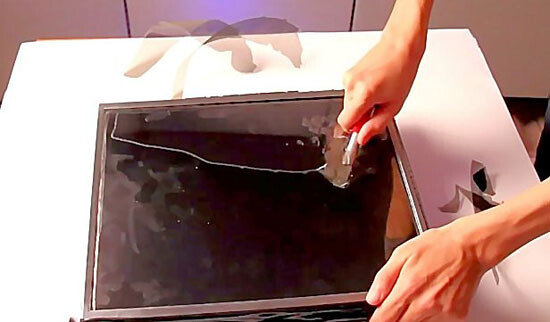

The Stack
I know stacks first of all from Donald Judd. One of them is dwelling in the museum of contemporary art in Tehran. Unlike most of the museum’s impressive collection of modern and postmodern art, which is in storage most of the time, Donald Judd’s Stack is on permanent display in the last corner of the course that takes you through the entire exhibition space. It is patiently sitting between two fire extinguishers: crooked, dusty, badly lit, the metal surfaces dented and stained from failed attempts at cleaning. It is completely removed from the controlling maintenance and display arrangements that you would normally find in a museum. Judd placed high value on ample dispersed daylight. He was really upset about mishandlings that would break up the uniformity of a flat surface, like fingerprints or scratches. I think of Eleonora Nagy, the chief expert on conserving Judd’s work. She would certainly be desperate to bring this stack back on track. But for now it remains here in its bleak existence in the basement of the museum. I do enjoy visiting it here. I enjoy it much more than seeing its decent and proper cousins at any of the well-tempered environments like MoMA or Kunsthaus Bregenz.
This stack is a bit like the signal lens I had in my bag. It has been rid of its function, relevance, value. It is just an optical thing that helps you understand and discover seeing. You can physically sense and explore its surfaces and reflections as they struggle with dust and darkness. In this light and condition it helps me to understand what a stack is: a rather fragile, unstable proposition that needs continuous maintenance, control, and repair. It also allows me to see how surface is a continuous intense struggle for seamlessness and flatness, which seems so effortless when you see the stack elsewhere. I discover the same sticky black dust particles on the acrylic sheets of the Stack that also cover my window sill and my computer screen at home and basically all of Tehran as the polluted air of the city leaks into any space.
This is disco of the finest complex sort. I can contemplate various ambitions, failures, and depths, visually, spatially, and contextually without forfeiting the pleasure of looking at the tinted, refracted, and reflected lights that play with the different surfaces on and around the object. Analogous to the glass stack of my display, Judd’s Stack is part of other stacks that involve geopolitical orders, histories, and possibly futures. It casts and refracts the light using plastic and metal elements. Both materials come from subterranean strata. Judd’s Stack was acquired with petro-dollars before the Revolution. It is part of the most valuable collection of Western modern art outside of Europe and the United States. Yet it is neglected, like the traffic light on Ohlauer Strasse—still in operation but not directly representing the current order. But it is also a stack of another time. Judd’s Stack was produced in the 1960s. It echoes a time of serial, industrial production: each section of the stack is a uniform unit of a sequence, and each Stack is part of a sequence. Today, a vast portion of production has shifted to planetary scale computing, and industrial production is accompanied and often replaced by other types of automations that are run by algorithms. Stacks look different now.
Benjamin Bratton has offered a comprehensive analysis of the territories and layers of the pervasive structure of planetary scale computing and what it entails.7 He suggest the model of a stack to envision the structure, and he emphasizes that it is an abstract schema and at the same time a concrete technical machine, composed of physical spaces like rooms, buildings, cities, streets, and subterranean energy sources, but also of social and human layers of gestures and affects, and of digital software and hardware layers that include cloud computing, fiber-optic cables, data centers, and protocols. According to Bratton, the top level of this vertical stack is inhabited by the user or human/inhuman actant. Below this is the layer of the interfaces that facilitate and structure access to and from the stack. And below this are the other four layers that make up the stack: IP address, city, cloud, and earth. The message containing the JPEG that Jim sent to Donna would go down the entire stack and up again to arrive at Donna’s inbox.
But known formations like geography, jurisdiction, and sovereignty are inconsistent in this stack. They appear distorted, refracted, partial, and sometimes contradictory. The way that places, things, and events correlate is reorganized in the stack and does not follow the established coherences. It even creates previously inexistent territories, for example via cloud computing. Who or what governs, who or what maps, regulates, or judges these new territories is partly unaccounted for. Human and inhuman actants can multiply as they appear and act simultaneously as consumer, producer, commodity, data, citizen, activist, hacker, and owner, and as carbon storage within the stack, changing their mode of involvement, status, and identity. To trace the refracting lights in this stack is to be violently scattered like shrapnel. It is to experience depth as a non-consistent space—at least not consistent in the way we have learned about geographies, nation-states, identities, and legality. Theoretically, I can appear several times as entirely different instances in the chain that leads from my display to your display. As Hito Steyerl ostensibly showed in her lecture “Is a Museum a Battlefield?,” you can trace something like a bullet through the stack and end up at your own artwork. Invisible gunshot residue and bullet holes in the various layers of the stack show you the way.
Dispatching my gaze down the layers, I intend to use the various acquired techniques of refracted and bent looking as tools and protection at the same time. It is hard to adopt, as I sense a certain blindness or strain. I go back to training with the polarizing filter removed from my screen to get accustomed to the initial disorientation when content is invisible. As soon as my eyes don’t expect a coherent recognizable picture any longer, I can allow my gaze to go down the stack and multiply and scatter to enter the succeeding layers. While the blindness was disorientating, the multiplied and scattered view of seeing all the conflicting, irreducible things at the same time and from different angles and perspectives is plain sickening. Jean Luc Godard recently issued a warning in his latest film, and first 3-D work, Adieu au Language (Goodbye to Language). He demonstrated how 3-D is actually meant to be applied,and he ripped apart the integrity of our visual apparatus. One eye is forced to go left, the other one has to go right to follow the secret agent and the dissident at the same time or the lovers who go opposite directions, and the effect is nausea. But we had better practice it, as this is the most actual and contemporary state of seeing; it does not smooth out irreducible antinomies and it does not stabilize the void that exists beyond flatness. 3-D is not watching the Lego Movie at a Cineplex. Nor is it any or other immersive experience of “being there”; it is rather a sickening gap in the next level of becoming worldly.
And what about the mess in each layer of and beyond that stack?
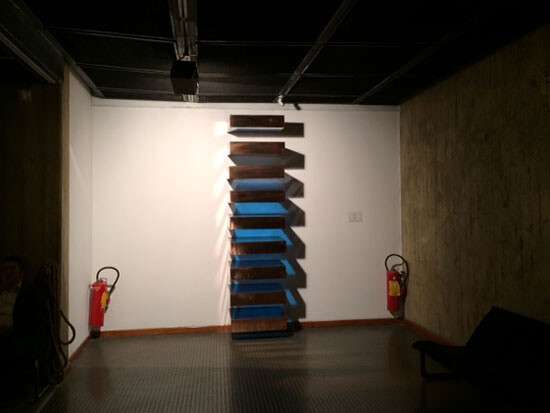

Parallax
The English word “pig” refers to the animal raised and sold by farmers, while the French-derived word “pork” refers to the edible meat from the pig. The gap between these two words relays the class dimensions of the animal, its producers and its consumers. The dual use of wording marks the distance between those who produce and those who consume: the prosperous Norman conquerors who could afford to eat porque from the pig raised by the underprivileged Saxon farmers. Japanese philosopher and literary critic Kojin Karatani refers to this very gap as the parallax dimension—a phenomenon that appears when we are confronted with irreducible antimonies and the opposed positions they produce. Karatani says that radical critique starts with asserting antimony as irreducible and renouncing all attempts to close the gap between positions. True critique, then, involves seeing things neither from one’s own viewpoint nor from the viewpoint of others, but rather recognizing the reality that is the structural interstice between positions.8
Parallax is the reason why we have a perception of depth, why we see 3-D. It occurs when a thing is viewed or screened from two positions, like the position of our eyes. But what if the positions are further apart then our own eyes?
In disco, this is a standard technique of visual experience. Lights from different positions blink down on the moving bodies and make forms jump, change size, and multiply. It’s a visual play that provides valuable experience of incoherent spaces, of interstices, and of worldly entanglement.
What if this parallax is in fact the default experience of viewing—of staring at the irreducible antimonies the system constantly produces? The siege on Ohlauer Strasse had this parallax dimension, and not surprisingly, it was undecidable where inside and outside were. The positions are structurally so far apart that they cannot create coherent space together. For the time being, one has to endure the nausea that the parallax produces in order to see and formulate a radical critique of the system that produces such antimonies. Blocking the police siege made the space jump, change size, multiply. Together with the police line and the rooftop withdrawal, the irreducible gap became visible.
I am back at the corner of Ohlauer Strasse, but instead of facing a police line defending Europe’s outside borders in the middle of my neighborhood, I am stopped by the traffic light whose red signal I awkwardly obey—not because I normally do, but because there is a police car right behind my bicycle. The light turns green and I continue my journey, cycling past the intersection along with all the other bicycles, cars, pedestrians. On the surface, the street corner has turned back to normal after ten days of an exceptional police operation and the protests that accompanied it. The refugee activists left the occupied school’s roof after continuous, nerve-splitting threats of eviction and negotiations with municipal officials. All of this effort led only to a minimal agreement: officials would tolerate the remaining forty activists in the building, but they rejected the other demands concerning rights of residence and free movement. So in fact the state of exception that had been very visible and tangible a few days earlier was not resolved, but was rather folded in and tucked away behind the surface of normality. Underneath this surface, which lets traffic flow, shops open, cyclists pay attention to traffic lights, and which makes the neighborhood livable, rests a continuous state of exception in which mobility is not a human right. But this state has retreated back to another layer, one that is hardly visible even though the banners are still covering the facade of the school and the refugees have to show ID when they leave and enter the building. Even though the events that happened on the same surface a few days earlier have accidentally allowed a glimpse into the depths of the stack and revealed the parallax dimension of the European system, it is tempting to adjust your eyes back to the smoothness of restored order.
Twenty-eight seconds green
Two seconds yellow
Thirty-seven seconds red
One second yellow
and again
Twenty-eight seconds green
See →.
See →. Another impressive collection can be found at →.
Peter Diem, “Die Symbole der Europäischen Union und der Vereinten Nationen” →.
See →.
Paul Virilio, Politics of the Very Worst (New York: Semiotext(e), 1999), 89.
Brian Dodson, “How to Build a Stealth Computer Display,” Gizmag, Nov. 10, 2013 →.
Benjamin Bratton, “On the Nomos of the Cloud,” lecture at the Berlage Institute in Rotterdam and at École Normale Supérieure Paris-Malaquais, Nov. 2011 →.
Kojin Karatani, quoted in Slavoj Žižek’s “The Parallax View,” New Left Review 25 (Jan.–Feb. 2004).
Category
Subject
Thanks to Brian Kuan Wood, Haytham EL Wardany, Kaye Cain-Nielsen, Ashkan Sepahvand, and to my neighborhood, Kreuzberg